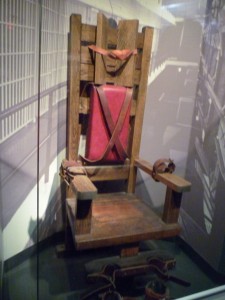Hosted by Jordan Dane
I’m pleased to have a guest for TKZ today. Donna Galanti is the author of the paranormal suspense novel A Human Element (Echelon Press). She is an ITW debut author of the class of 2011/2012 and a member of SCBWI and Horror Writers Association. She lives with her family in an old farmhouse in PA with lots of nooks, fireplaces, and stinkbugs but sadly no ghosts.
Welcome, Donna!
Watchers. My favorite fictional figures that hover on the sidelines weaving in and out of the story. They change lives.
You may know them as guardians, guides, mentors, or allies. They help the hero on his journey by blocking them, guiding them, or even saving them. They can be a mysterious and dark overseer or a jolly and light eccentric. They ultimately save the hero or motivate him to save himself.
In my suspense novel, A Human Element, I created The Man in Black (Felix) as a watcher. He is a guardian, a guide, and a hero. He connects to both the earthly and the other-worldliness in my characters. Sometimes Felix is there, like a lifeguard, and sometimes he’s watching and you simply sense his presence, more like a god. In the end he suffers and is a martyr for the greater good so his people can go on.
How did Felix evolve and how do I perceive his function? He evolved as an instrument of light to help others survive so his own world would survive. His presence allows me to push the protagonist truly beyond the brink and eventually be saved. He also represents hope and acts as a catalyst to keep hope alive. He is like a god because he changes the destiny of others for a greater good (an entire people). And, like a god, he chooses not to always interfere unless it’s for the greater good. In a way he is a mythical figure.
My favorite mythical watcher in fiction is Merlin from the Arthurian legend. He’s a man of mystery and magic with roles as a sorcerer, prophet, bard, adviser, and teacher. In Mary Stewart’s Merlin Trilogy, Merlin is an ordinary mortal but one with intuitive intelligence and clairvoyance. He has foreseen that Arthur will become a great king who will unite all of Britain.
Just as Felix’s mission in A Human Element drove him to facilitate a child’s creation to carry on the line of his dying people, Merlin’s vision led him to facilitate Arthur’s creation as well. I like the idea of connecting medieval to modern times knowing that Merlin and Felix share the same mission. They both originate as earthly and mystical watchers who change destinies so their people may conquer. And don’t we, as authors, often look to the past to create something new in the present?
It appeals to me that often the watcher figure is a hero too, willing to sacrifice his life for the one he oversees. He gives the protagonist what he needs to finish his journey and outwit death, and in doing so may need saving himself.
Literature is full of such heroes whose actions require that they, too, be saved. Like Arthur “Boo” Radley in Harper Lee’s To Kill a Mockingbird. He’s a mysterious character we slowly get to know. At first, perceived as a dark, ghostly figure he ends up saving the children, Scout and Jem. He’s a self-exiled loner who appears as needed to save the children from evil. In the end Scout and Jem save him back, providing justice for Boo.
One of my favorite authors, Dean Koontz, is known for his watchers. In his book, Lightning, Stefan Krieger is a watcher hero who needs saving himself. He’s a time traveler and a guardian of Laura since she was born. He interferes when necessary to save her life many times. In doing so he changes the course of her destiny for good–and bad. His fate eventually interweaves with hers until they are caught in a life or death situation. He saves Laura, but in the end she saves him too.
I can’t forget my beloved animal watchers in fiction. In Watchers (great name!) by Dean Koontz, Einstein is a genetically altered golden retriever with human intelligence. He’s also saved by the couple he watches too. Escaped and on the run, Einstein acts as a guide to bring these two lonely people together and transform them. He becomes their guardian inspiring them to save him from his nemesis, who in turn watches him. Check out other fictional dogs in literature HERE, including my favorites, Buck and White Fang.
I didn’t realize I had an obsession with watcher figures until pulling book after book out from my shelves. And then I knew why. I adore tormented characters and that’s often what watchers are. And that’s why I write them. They are wounded heroes that travel with us to the dark side and help draw us back. They may not always save the hero by their own hand, but at that critical moment they drive the hero to take control of his own destiny. And sometimes the watcher needs saving right back.
Do you have favorite watchers from other books or movies? What “saves” you, as author, when you’ve spent too long on your dark side? Do you have a “watcher” to help pull you back from the dark side and save you?
Donna Galanti Contact Info:
Facebook & Website & Twitter: @donnagalanti








